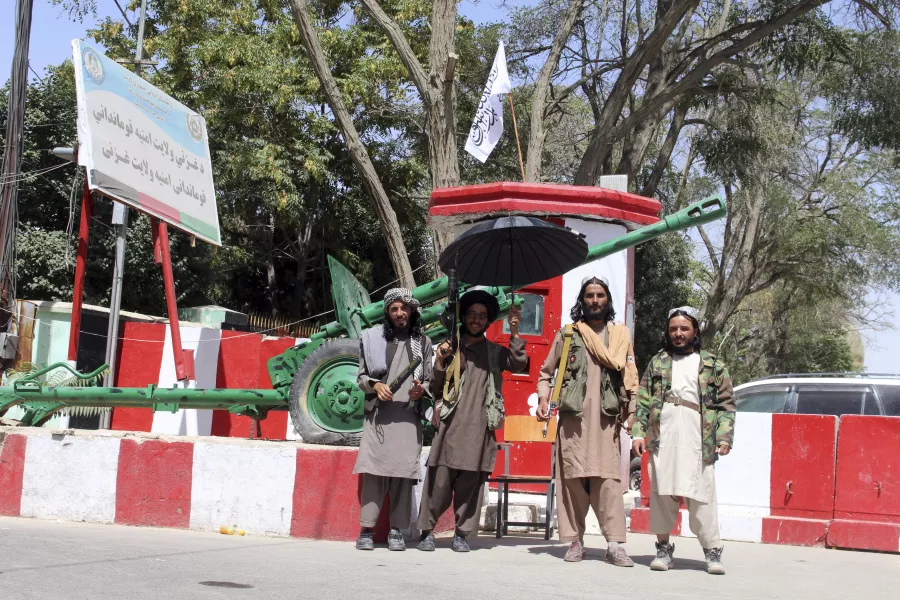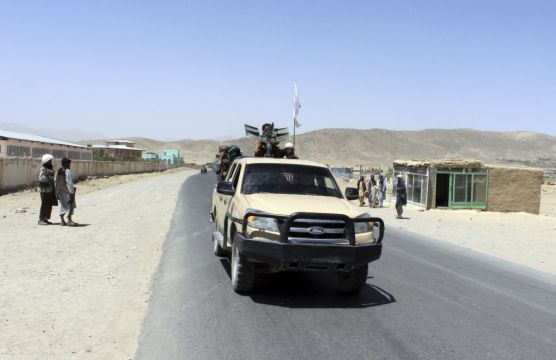The Taliban have completed their sweep of the country’s south as they took four more provincial capitals in a lightning offensive that brought them closer to Kabul, weeks before the US is set to officially end its two-decade war.
In the last 24 hours, the country’s second and third-largest cities — Herat in the west and Kandahar in the south — have fallen to the insurgents as has the capital of the southern province of Helmand, where American, British and Nato forces fought some of the bloodiest battles of the conflict.
The blitz through the Taliban’s southern heartland means the insurgents now hold half of Afghanistan’s 34 provincial capitals and control more than two-thirds of the country — weeks before the US plans to withdraw its last troops.
The Western-backed government in the capital Kabul still holds a smattering of provinces in the centre and east, as well as the northern city of Mazar-i-Sharif.
Kabul is not directly under threat yet, but the resurgent Taliban were battling government forces in Logar province, 50 miles from the capital.
The US military has estimated Kabul could come under pressure within 30 days and that the Taliban could overrun the rest of the country within a few months. They have already taken over much of the north and west.
In the south, the insurgents swept through more provincial capitals on Friday.
Attaullah Afghan, head of the provincial council in Helmand, said the Taliban captured Lashkar Gah after weeks of heavy fighting and raised their white flag over government buildings.

He said three national army bases outside the city remain under control of the government.
Atta Jan Haqbayan, council chief in Zabul province, said the local capital of Qalat fell and officials were in a nearby army camp preparing to leave.
Bismillah Jan Mohammad and Qudratullah Rahimi, legislators in Uruzgan province, said local officials had surrendered Tirin Kot. Taliban fighters paraded through a main square there, driving a Humvee and a pick-up seized from Afghan security forces.
In the west, Fazil Haq Ehsan, head of the council in Ghor province, said its capital Feroz Koh also fell to the insurgents.
Hundreds of thousands of Afghans have fled their homes amid fears the Taliban will return the country to the brutal, repressive rule it imposed when it was last in power at the turn of the millennium.

At that time, the group all but eliminated women’s rights and conducted public executions as it imposed an unsparing version of Islamic law.
An early sign of such tactics came in Herat, where insurgents paraded two alleged looters through the streets on Friday with black make-up smeared on their faces.
There are also concerns that the fighting could plunge the country into civil war, which is what happened after the Soviets withdrew in 1989.
The UN refugee agency said nearly 250,000 Afghans have fled their homes since the end of May, and 80% of those are women and children.
It said 400,000 civilians have been displaced since the beginning of the year, joining millions who have fled previous rounds of fighting in recent decades.

Pakistan opened its Chaman border crossing for people who had been stranded in recent weeks.
Juma Khan, the border town’s deputy commissioner, said the crossing was reopened following talks with the Taliban.
Peace talks in Qatar between the Taliban and the government remain stalled, though diplomats are still meeting, as the US, European and Asian nations warned that battlefield gains would not lead to political recognition.
“We demand an immediate end to attacks against cities, urge a political settlement, and warn that a government imposed by force will be a pariah state,” said Zalmay Khalilzad, the US envoy to the talks.







